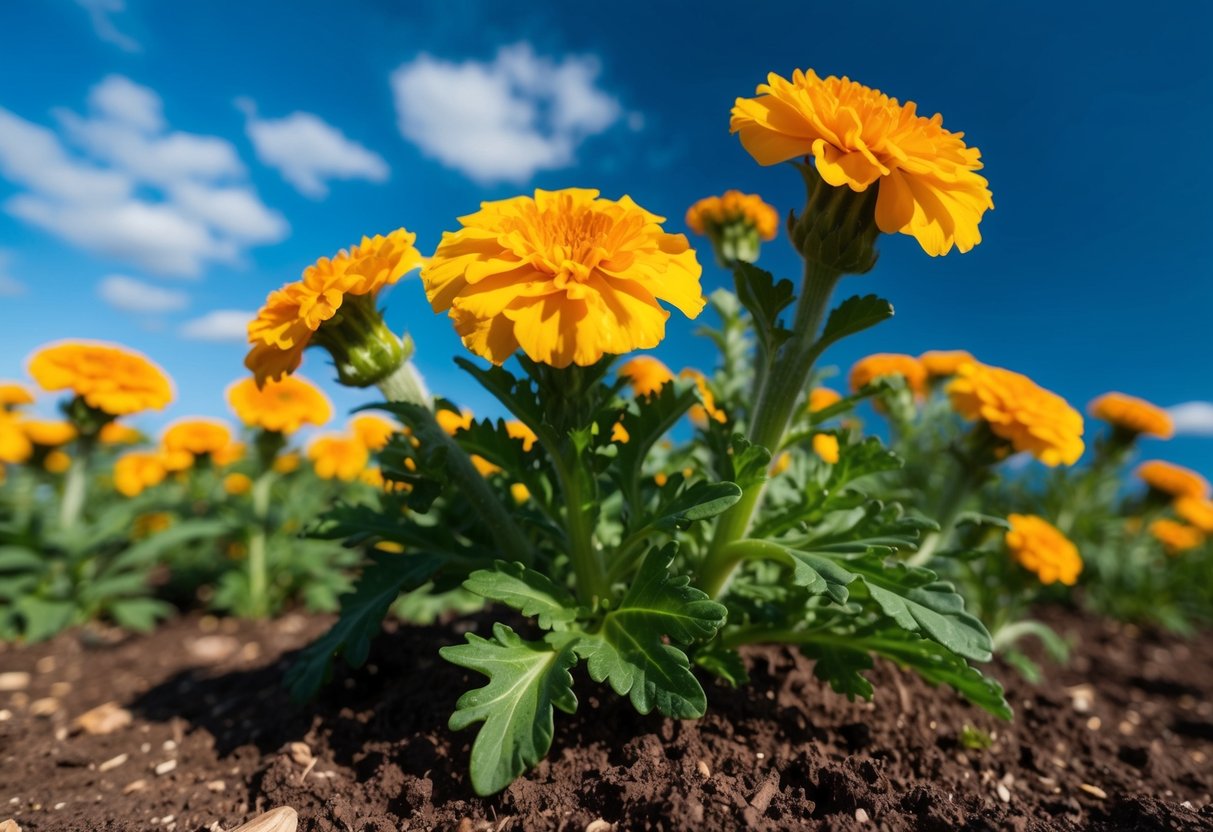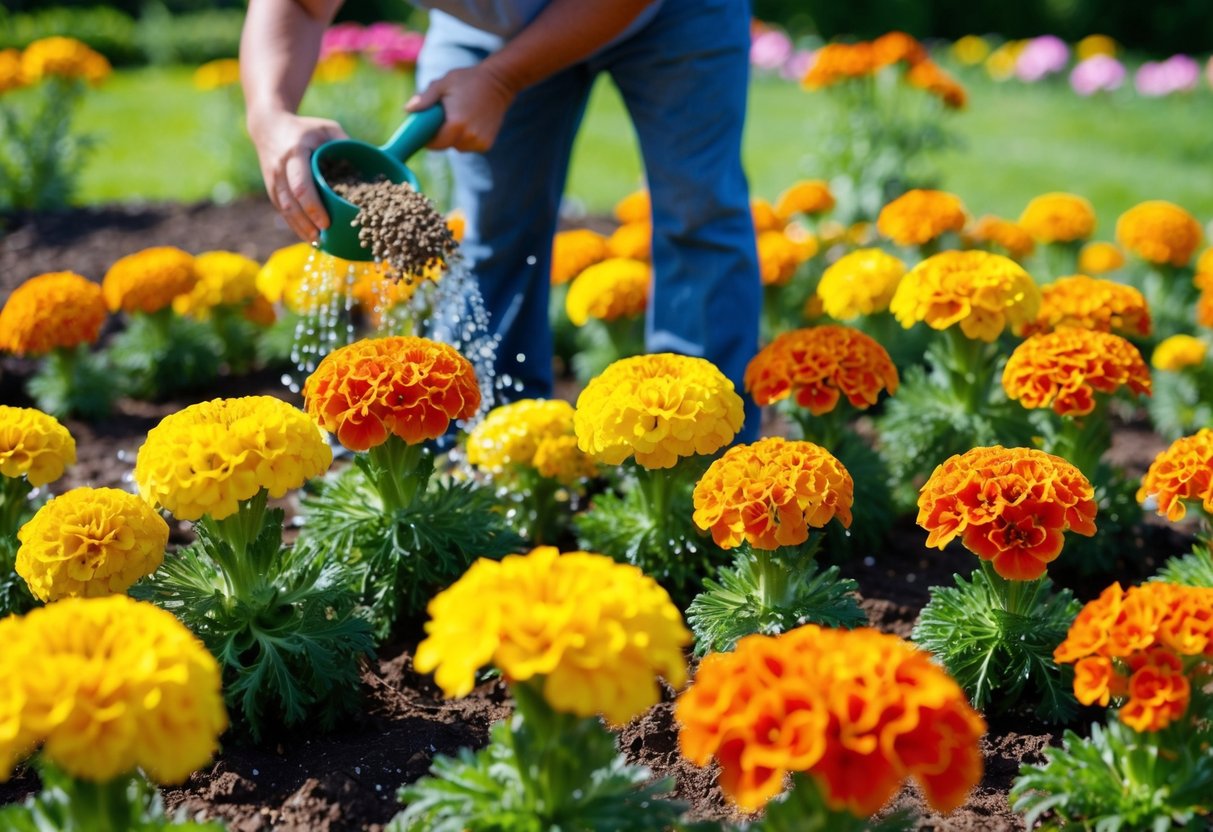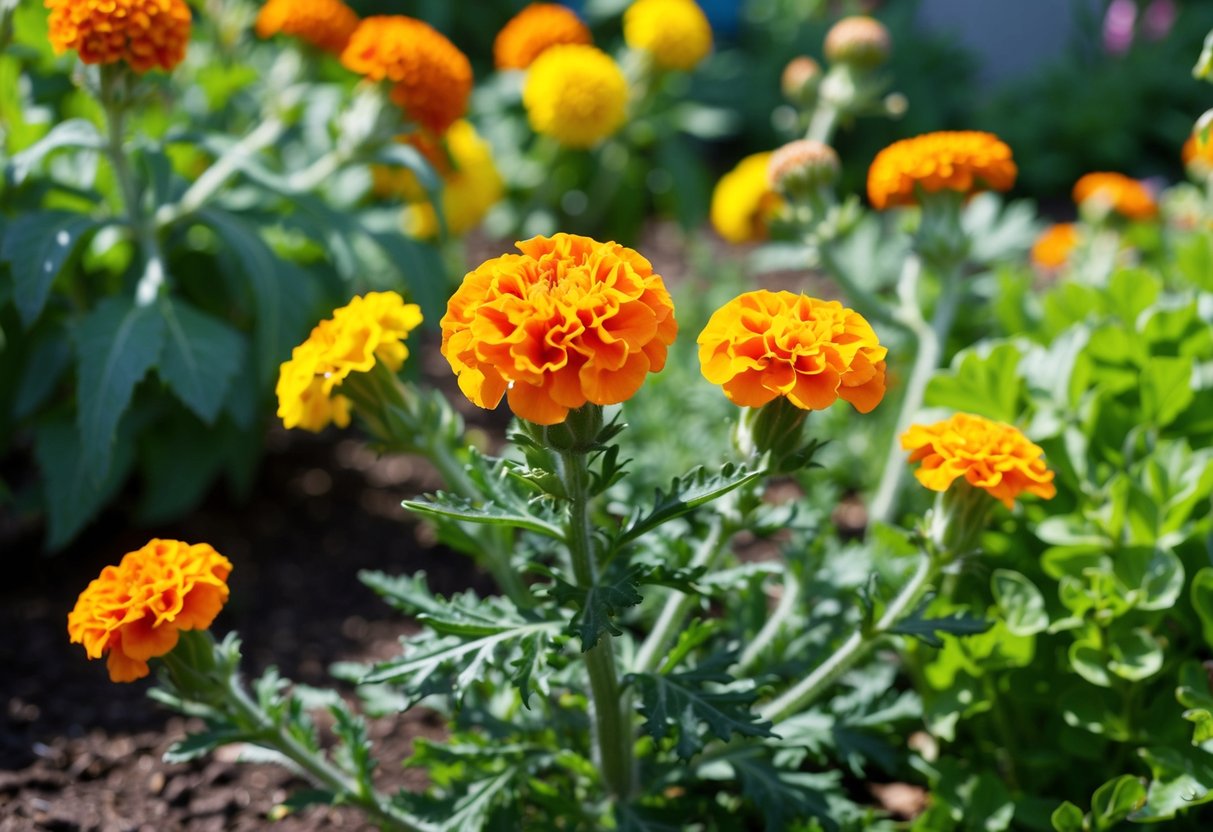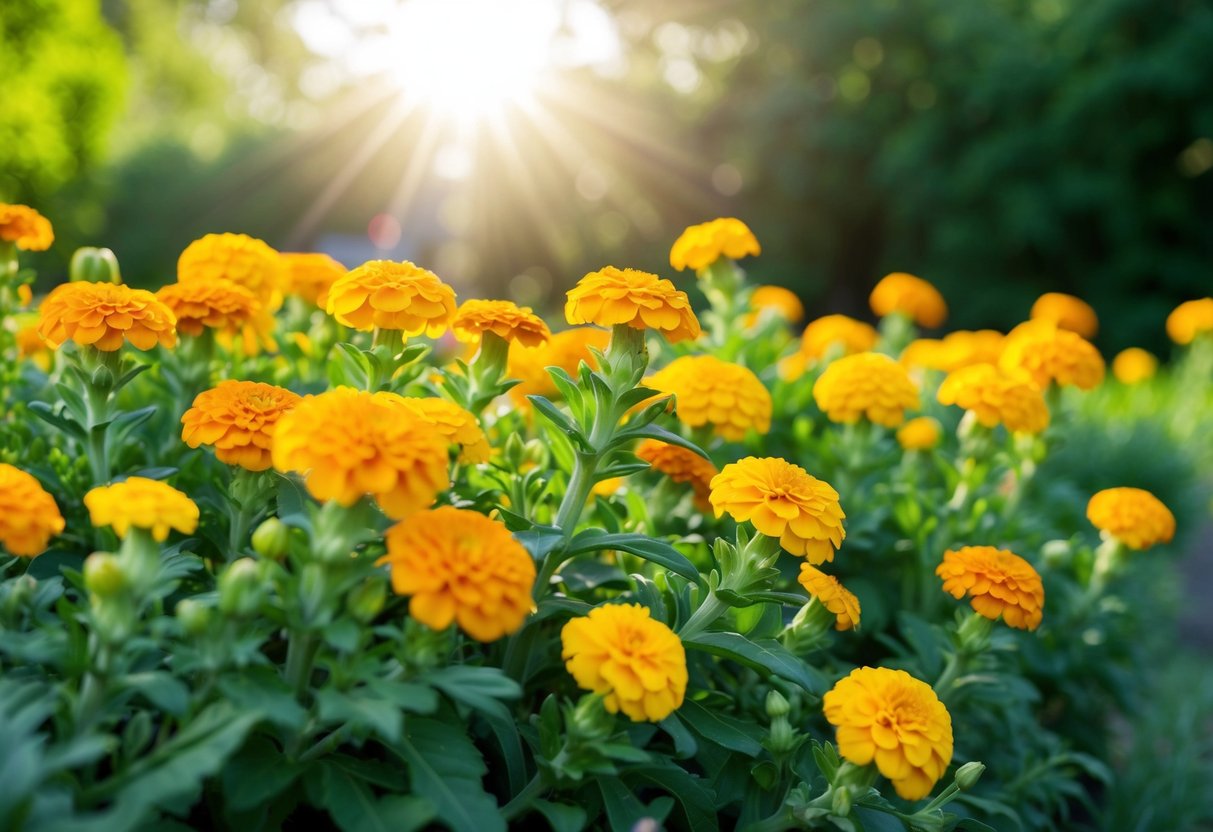Do Marigolds Grow Better in Sun or Shade? Discover the Ideal Spot!
If you’re thinking about adding marigolds to your garden, you’re in for a treat! These colorful annual flowers are not only easy to grow but also add a vibrant touch to any space. The big question is whether marigolds grow better in the sun or shade. Marigolds thrive best in full sun but can also tolerate partial shade. This makes them a versatile option for gardeners with different light conditions.

Picture your garden with bright marigolds basking under the sun, their blooms at their fullest. These flowers are known for their robust nature, and they can endure different growing conditions. Whether you’ve got a sun-drenched garden or areas with some shade, marigolds can adapt pretty well.
Choosing the right spot for your marigolds depends on what you want them to achieve. Do you hope for abundant blooms? Aim for a sunny spot. Want to fill a partially shaded area? Marigolds can handle that too. By understanding these light preferences, you set the stage for a beautiful, colorful garden.
Optimal Growing Conditions for Marigolds

Marigolds thrive in specific conditions that ensure they bloom beautifully. These flowers need ample sunlight, the right soil type, and careful watering to grow best.
Sunlight Requirements
Marigolds love plenty of sunlight. You’ll want to plant them in areas where they can get full sun for at least six to eight hours daily. This direct sunlight is crucial for their vibrant blooms. If you’re growing them indoors or in a shady spot, use a south-facing window to ensure they get enough light.
While marigolds are adaptable, they don’t do well in partial shade or light shade. Insufficient light may lead to fewer flowers and slower growth.
Soil Preferences
When it comes to soil, marigolds are not too picky. They flourish in well-draining soil with a neutral to slightly acidic soil pH around 6.0 to 7.0. Avoid soil that is too rich in organic matter since leaner soil usually encourages better growth.
It’s helpful to use a soil-based potting mix in containers, which ensures proper drainage. Adding a layer of mulching on top can help keep soil moisture balanced and prevent weed growth, ensuring a nutrient-rich environment for your plants.
Watering Needs
Proper watering is essential for healthy marigold growth. You should water them regularly, especially during dry periods, making sure the soil remains moist without becoming soggy. Using a watering can with a gentle spray is ideal to avoid overwatering.
Marigolds are somewhat drought-tolerant, but it’s best to keep an eye on soil moisture levels. In the hottest months, they may need more frequent watering, while in cooler weather, you can water them less often. Checking the top inch of the soil for dryness is a good practice to decide when to water.
Planting and Cultivation of Marigolds

Marigolds thrive with proper planting and care, ensuring vibrant flower color and sturdy stems. You’ll need to focus on the right techniques for seeding, fertilization, and maintenance to get the best results.
Seeding and Planting
When you’re ready to plant marigolds, start with quality seeds or transplants. To grow marigolds from seed, sow them directly into well-draining soil after the last frost. It’s important to space French and signet marigold types 8 to 10 inches apart, while larger African marigolds should be at least 10 to 12 inches apart. Ensure the soil is slightly acidic to neutral, which helps the plants grow strong and healthy. You can find more details about marigold planting in containers and gardens. Plant in full sun to encourage vibrant color and robust growth.
Fertilization Strategies
Marigolds are not very demanding when it comes to soil nutrients. They prefer leaner soils and don’t need excessive organic matter. Adding too much fertilizer can actually reduce their flower production, so it’s best to keep it minimal. Use a general-purpose fertilizer at the beginning of the growing season to give them a boost. Be careful not to over-fertilize as this can lead to lush foliage but fewer blooms. Fertilizing marigolds correctly ensures a strong and healthy plant with vivid flower color.
Pruning and Deadheading
Pruning and deadheading are key to maintaining vibrant and healthy marigolds. Deadheading, the process of removing spent blooms, encourages your plants to keep producing flowers. To do this, simply pinch off the faded flowers above the nearest leaves. Regular deadheading will lead to a tidy appearance and continuous blooming. Periodic pruning also helps manage plant size and promotes sturdy stems. You’ll notice more blooms and fewer pests when marigolds are kept neat and cared for. Pruning keeps your marigolds looking their best all season long.
Understanding Marigold Varieties and Their Needs

Marigolds come in various types, each with unique characteristics. Learning about these can help you provide the right conditions for vibrant blooms and healthy plants. Understanding the differences can also guide you in selecting the best marigold variety for your garden.
Differences Among Marigold Types
There are several varieties of marigolds, including African, French, and Signet marigolds. African marigolds, also known as Tagetes erecta, are known for their large, bold flowers and tall growth. They are typically more heat-tolerant and do well in garden beds.
French marigolds, or Tagetes patula, have smaller blooms and bushier growth. They are often used as borders and do well in pots. Signet marigolds, also called Tagetes tenuifolia, are smaller and have a lighter, citrusy scent. These are great for edging and can be used in salads due to their edible leaves.
Shade Tolerance in Varieties
While marigolds generally prefer full sun, some varieties can handle partial shade. French marigolds are a bit more adaptable to shade compared to African marigolds. This makes them suitable for areas where sunlight varies throughout the day.
Mexican marigolds are another alternative, known for their tolerance to a range of light conditions. Planting in partial shade can help certain marigolds retain moisture better, especially in hot climates. This reduces stress from heat, promoting healthier growth.
Choosing the right marigold variety for your garden means considering your local climate and light availability to ensure vibrant blooms and thriving plants.
Managing Pests and Diseases in Marigold Plants

Marigolds are known for their vibrant colors and pest-repelling properties. Despite this, they can still be affected by certain pests and diseases. Focusing on these can help ensure your plants grow healthy and strong.
Common Pests and Natural Predators
Garden pests like aphids, thrips, and mites can weaken marigolds. These insects suck the juices from the plant, leading to poor growth and fewer blooms. Keeping an eye out for these bugs is important for maintaining healthy marigold plants.
Natural predators like ladybugs and lacewings can help control these pests. Encouraging these beneficial insects in your garden can make a big difference. Companion planting with pest-resistant plants may also keep some pests away.
Checking your plants regularly for signs of pests such as webbing or sticky residue helps catch problems early. You might consider using insecticidal soap for larger infestations, but always use it carefully to protect beneficial insects.
Preventing and Treating Diseases
Marigolds can suffer from fungal diseases like powdery mildew and root rot. Powdery mildew appears as white powder on the leaves, while root rot, caused by overwatering, leads to mushy roots.
Practicing disease control by planting marigolds in areas with full sun and well-drained soil can help reduce the risk. Watering at the base of the plant helps keep leaves dry and healthy.
If you notice signs of disease, removing affected parts of the plant can prevent further spread. Applying fungicides might be necessary for severe cases. Keeping your marigolds healthy ensures they can absorb the nutrients they need and resist diseases better.
Benefits of Marigolds in the Garden

Marigolds are a versatile addition to any garden. They bring both practical and aesthetic benefits that can enhance your gardening experience. Learn how these vibrant flowers can serve as great companions in your vegetable garden and add beauty to your outdoor space.
Companion Planting
Marigolds excel in companion planting. They pair well with many vegetables and can help deter pests due to their natural properties. Planting marigolds near tomatoes or peppers can protect these crops from harmful insects. Their scent can repel nematodes, tiny worms that can damage plants’ roots.
In addition to pest control, marigolds also attract pollinators. You might see more bees and butterflies in your garden, which helps improve the bloom time of your crops. Marigolds can handle full sunlight and heat stress, making them resilient companions in various gardening conditions.
Aesthetic Appeal and Uses
The vibrant colors of marigolds, ranging from gold to deep tangerine gem, make them a stunning choice for any garden design. These flowers offer a long bloom time, ensuring a bright and lively display through the growing season. They grow well in pots and can be used as beautiful cut flowers for indoor arrangements.
Marigold flowers also help with moisture retention in the soil. This can reduce drought stress on nearby plants. Their compact growth means they fit nicely in small spaces, and when planted in full sun, they produce plenty of eye-catching blooms. Add marigolds to your garden for their beauty and practical benefits.







